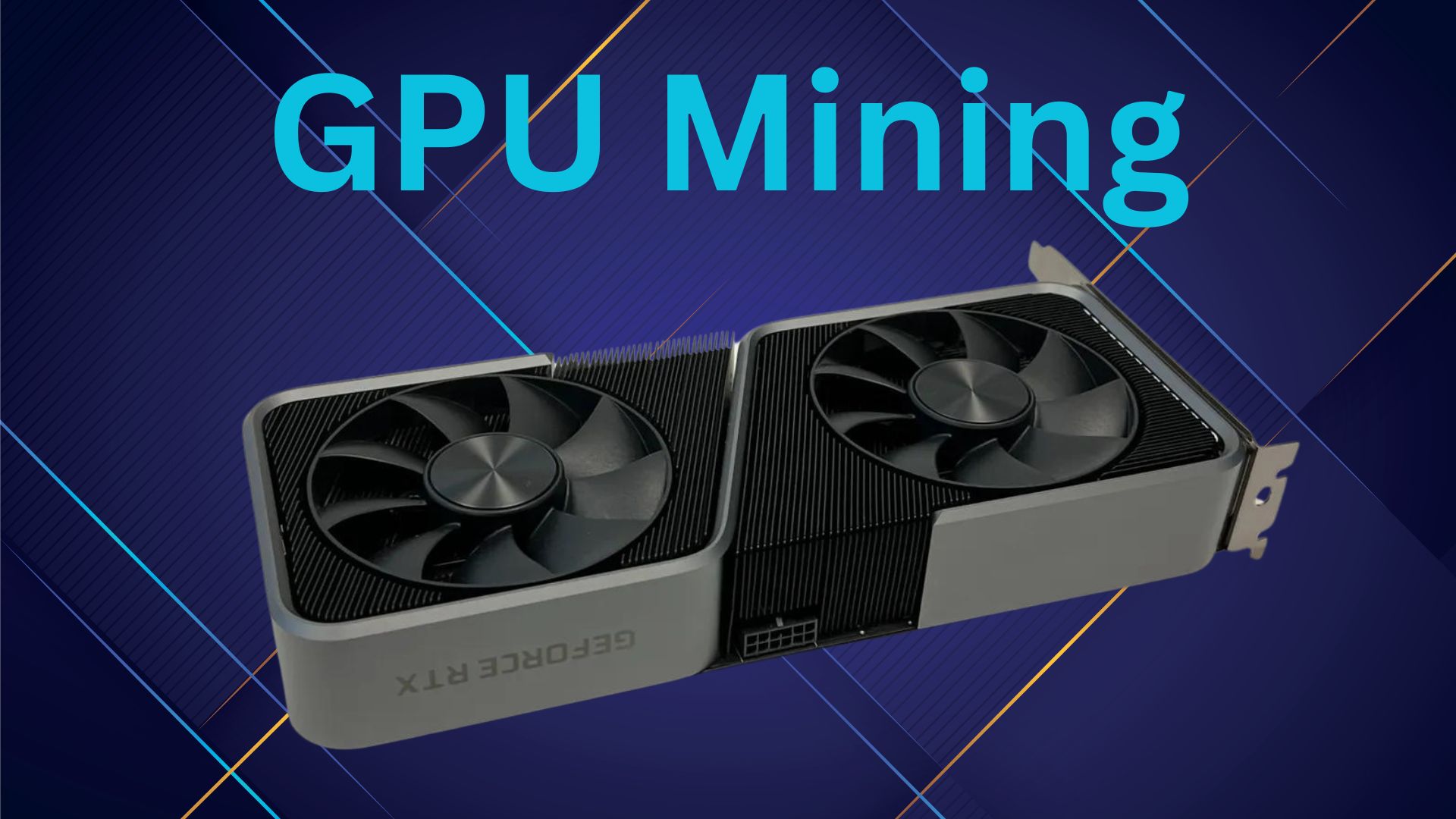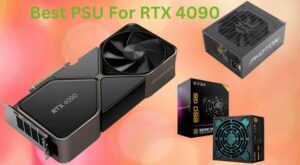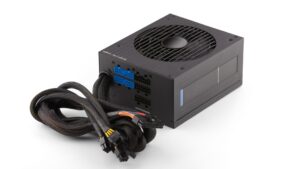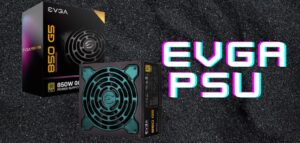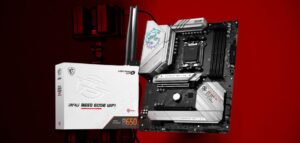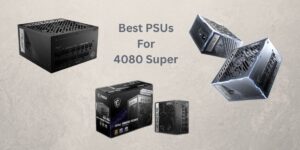How GPU Mining Works? Unraveling the Intricacies
The rise of cryptocurrencies has led to a surge in interest in the process of mining, which is essential for validating transactions and maintaining the integrity of these digital currencies. Among the various methods of mining, GPU mining has gained significant attention due to its relatively low cost and high computational power compared to other methods like ASIC mining. GPU mining involves using a computer’s graphics processing unit (GPU) to solve complex mathematical problems and validate transactions, thereby adding them to the blockchain. This method has become increasingly popular among individuals and small-scale mining operations due to its accessibility and potential for profitability. In this post, we will delve into the details of how GPU mining works, its advantages and disadvantages, and the necessary hardware and software requirements for those interested in this method of mining.
What Is GPU Mining?
GPU mining is a process of validating cryptocurrency transactions and adding them to the blockchain by using a computer’s graphics processing unit (GPU). This method is particularly effective for proof-of-work cryptocurrencies like Bitcoin, Ethereum, and Litecoin. GPUs are designed to handle complex calculations in parallel, making them well-suited for the repetitive, compute-intensive work required for cryptocurrency mining. The hash rate, measured in hashes per second (H/s), is a key metric for evaluating the performance of a GPU in mining. GPU mining involves solving complex mathematical problems to verify transactions and create new blocks on a blockchain, with the first miner to solve the problem earning a block reward in cryptocurrency.
How Does GPU Mining Works?
To start GPU mining, you need to have the right hardware, which is a good graphics card. The most popular graphics cards for mining are made by Nvidia and AMD. It is essential to choose a graphics card that has a high hash rate, which is the speed at which your computer can solve mathematical problems. Once you have your graphics card, you need to install mining software on your computer. There are several mining software options available, each with its own features and setup process. You will also need to choose a mining pool to join. A mining pool is a group of miners who combine their computing power to increase their chances of finding a block and receiving a reward.
1: Mining Hardware:
- The primary hardware requirement for GPU mining is a good graphics card. The most popular graphics cards for mining are made by Nvidia and AMD. When choosing a graphics card for mining, it is crucial to consider the hash rate, power consumption, and cooling system. A higher hash rate means that your computer can solve mathematical problems faster, but it also consumes more power and generates more heat.
2: Mining Software:
- The mining software is responsible for connecting your computer to the mining pool and managing the mining process. There are several mining software options available, each with its own features and setup process. Some popular mining software options include CGMiner, EasyMiner, and MinerGate.
3: Mining Pools:
- Joining a mining pool is essential for GPU mining. A mining pool is a group of miners who combine their computing power to increase their chances of finding a block and receiving a reward. The advantages of joining a mining pool include a more stable income, a reduced variance in earnings, and a lower requirement for expensive hardware
Why GPUs? Understanding the Hardware Choice:
GPUs are chosen for cryptocurrency mining due to their unique combination of computational power, efficiency, and affordability. Here are the key reasons why GPUs are preferred for mining:
Parallel Processing:
- GPUs are designed to handle complex calculations in parallel, making them well-suited for the repetitive, compute-intensive work required for cryptocurrency mining. They can perform numerous calculations simultaneously, giving them an advantage over other hardware options like CPUs.
High Computational Power:
- GPUs have many processing cores that can perform multiple calculations simultaneously, enabling them to handle large amounts of data and perform complex mathematical operations much faster than traditional CPUs. This makes them ideal for the repetitive, compute-intensive work required for cryptocurrency mining.
Energy Efficiency:
- GPUs are designed to be energy-efficient, which is crucial for mining operations that require significant computational power. They consume less power compared to other hardware options, making them a cost-effective choice for miners.
Affordability:
- GPUs are relatively more accessible to individuals interested in mining compared to specialized mining equipment like ASICs. This decentralization promotes broader participation in the mining process and helps maintain the integrity of the blockchain network.
Flexibility:
- GPUs can be used to mine a wide range of cryptocurrencies, making them a versatile option for miners. They can be easily upgraded or repurposed for other mining tasks, increasing their utility and resale value.
Cost-Effectiveness:
- While ASICs offer superior performance and efficiency, GPUs are generally more affordable and offer a better cost-benefit ratio for many miners. They can be used to mine multiple cryptocurrencies, increasing the potential for profitability
The GPU Mining Process Unveiled:
The GPU mining process involves using graphics processing units (GPUs) to perform computational tasks required for mining cryptocurrencies. Here’s a step-by-step overview of how GPU mining works:
- Hash Functions: GPUs solve hash functions to verify transactions and create new blocks on the blockchain. Hash functions are complex mathematical problems that require significant computational power to solve.
- Mining Algorithms: GPUs use mining algorithms like Ethash and SHA-256 to solve the hash functions. These algorithms are designed to be computationally intensive and require powerful processing units to solve efficiently.
- Parallel Processing: GPUs are designed to handle complex calculations in parallel, making them well-suited for the repetitive, compute-intensive work required for cryptocurrency mining. They can perform numerous calculations simultaneously, giving them an advantage over other hardware options like CPUs.
- Blockchain Verification: GPUs verify transactions on the blockchain by solving the hash functions. This process ensures the integrity of the blockchain and secures the network.
- Block Rewards: The miner who solves the hash function first gets to add the block to the blockchain and receives a block reward in the form of cryptocurrency.
- Mining Rigs: Miners often build GPU mining rigs that consist of multiple GPUs working together to increase their computational power and mining efficiency. These rigs include components like motherboards, power supplies, cooling systems, and risers to connect the GPUs.
- Mining Pools: Many miners join mining pools to combine their computational power and increase their chances of finding blocks and receiving rewards. Mining pools distribute the rewards among participants based on their contributed computational power.
The profitability of GPU mining works depends on factors such as the cryptocurrency being mined, the computational power of the GPUs, electricity costs, and the difficulty of the mining algorithm. However, GPU mining has become less profitable for some cryptocurrencies like Ethereum due to the transition to proof-of-stake consensus mechanisms
GPU Mining Rig Components:
A GPU mining rig typically consists of several components:
1. GPU: The GPU is the core component of a mining rig. It performs the computational tasks required for mining. Popular GPUs for mining include NVIDIA GeForce RTX 3060 Ti and AMD Radeon RX 6700 XT.
2. CPU: The CPU is responsible for managing the mining rig and handling general computing tasks. It does not significantly affect the performance of the GPU but ensures an optimal experience.
3. Motherboard: The motherboard connects all the components of the mining rig and provides a platform for the GPU to operate.
4. Hard Drive: The hard drive stores the operating system and mining software.
5. Power Supply: The power supply provides the necessary power to run the mining rig. It must be capable of handling the high power consumption of multiple GPUs.
6. RAM: The RAM provides temporary storage for the mining rig, allowing it to handle complex calculations efficiently.
7. Cooling Fans: Cooling fans help to dissipate heat generated by the GPUs, ensuring optimal performance and longevity.
8. Risers: Risers connect the GPUs to the motherboard, allowing them to operate together efficiently.
9. Mining Rig Frames: The mining rig frame houses all the components and provides a secure and organized environment for the mining rig.
Popular Cryptocurrencies for GPU Mining:
GPU mining is a popular method for validating transactions and adding them to the blockchain, particularly for proof-of-work cryptocurrencies. Several cryptocurrencies are well-suited for GPU mining due to their algorithms and computational requirements. Here are some of the most popular cryptocurrencies for GPU mining:
- Bitcoin (BTC): Bitcoin is one of the most widely mined cryptocurrencies, using the SHA-256 algorithm. It is highly competitive and requires significant computational power, making it challenging for individual miners to profitably mine it. However, it is still a popular choice for large-scale mining operations.
- Ethereum (ETH): Ethereum is another popular cryptocurrency for GPU mining, using the Ethash algorithm. It is less competitive than Bitcoin and can be mined using a variety of GPUs, making it more accessible to individual miners.
- Litecoin (LTC): Litecoin is a peer-to-peer cryptocurrency that uses the Scrypt algorithm, making it more accessible to GPU miners. It is less competitive than Bitcoin but still requires significant computational power.
- Monero (XMR): Monero is a privacy-focused cryptocurrency that uses the CryptoNight algorithm, making it suitable for GPU mining. It is less competitive than Bitcoin and Ethereum but still requires significant computational power.
- Ravencoin (RVN): Ravencoin is a peer-to-peer cryptocurrency that uses the X16R algorithm, making it suitable for GPU mining. It is less competitive than Bitcoin and Ethereum but still requires significant computational power.
- Grin (GRIN): Grin is a privacy-focused cryptocurrency that uses the Cuckoo Cycle algorithm, making it suitable for GPU mining. It is less competitive than Bitcoin and Ethereum but still requires significant computational power.
- Zcash (ZEC): Zcash is a privacy-focused cryptocurrency that uses the Equihash algorithm, making it suitable for GPU mining. It is less competitive than Bitcoin and Ethereum but still requires significant computational power.
Choosing the Right Cryptocurrency for GPU Mining:
When choosing a cryptocurrency to mine with GPUs, there are several key factors to consider:
1. Profitability:
The potential profitability of mining a particular cryptocurrency depends on factors like the block rewards, transaction fees, and the current market value of the coin. Use mining calculators to estimate potential earnings based on your GPU’s hash rate and electricity costs.
2. Mining Algorithms:
Some cryptocurrencies use mining algorithms that are ASIC-resistant and better suited for GPU mining. Examples include Ethash (Ethereum), Equihash (Zcash), and CryptoNight (Monero).
3. Mining Difficulty:
The difficulty of mining a cryptocurrency affects your chances of successfully mining a block and earning rewards. Lower-difficulty coins may be easier to mine profitably with GPUs.
4. Market Demand and Liquidity:
Choose coins with strong market demand and high liquidity to easily convert your mined coins into cash or other cryptocurrencies. Coins with a clear use case and strong developer communities tend to have more stable prices.
5. Hardware Compatibility:
Ensure your GPUs are compatible with the mining algorithms used by the cryptocurrency. Some coins may be better suited for AMD or NVIDIA GPUs.
6. Energy Efficiency:
Consider the power efficiency of your GPUs to minimize electricity costs. More efficient GPUs can mine profitably at lower electricity rates
Challenges and Considerations of GPU Mining:
GPU mining, while profitable, comes with several challenges and considerations:
Energy Consumption and Heat Generation:
- Energy Consumption: GPU mining requires significant computational power, which consumes a substantial amount of electricity. The energy consumption of a mining rig can vary depending on factors such as the number of GPUs, the algorithm being mined, and the efficiency of the hardware.
- Heat Generation: Mining rigs generate a considerable amount of heat due to the continuous operation of GPUs. This heat can not only impact the mining equipment but also affect the ambient temperature of the room. Proper ventilation and cooling systems are essential to mitigate heat-related issues.
Maintenance and Upkeep:
- Hardware Maintenance: GPUs are prone to overheating and damage if not properly maintained. Regular cleaning and monitoring of temperatures are crucial to extend the lifespan of the GPUs.
- Software Maintenance: Mining software and algorithms need to be updated regularly to ensure optimal performance and security. Miners must stay informed about software updates and potential security threats.
Scalability and Upgrades:
- Scalability: GPU mining rigs can be scaled up by adding more GPUs, but this increases energy consumption and heat generation. Miners must balance the need for increased computational power with the potential environmental and financial impacts.
- Upgrades: As new GPU generations are released, miners must consider upgrading their hardware to maintain optimal performance and efficiency. This can be costly and may require significant changes to the mining setup.
Environmental Concerns:
- Energy Consumption: GPU mining consumes significant amounts of energy, which can contribute to environmental issues like carbon emissions and climate change. Miners must consider the environmental impact of their operations and explore alternative energy sources.
- E-Waste: The rapid turnover of mining equipment generates electronic waste, which can contribute to environmental pollution. Miners must consider responsible disposal methods for their equipment.
Security Concerns:
- Cybersecurity: GPU mining rigs are vulnerable to hacking and security threats, which can result in the loss of cryptocurrency and mining equipment. Miners must ensure their rigs are properly secured and updated with the latest security patches.
Market Volatility:
- Cryptocurrency Prices: The profitability of GPU mining depends on the market value of the cryptocurrency being mined. Market fluctuations can significantly impact the profitability of mining operations.
Algorithm Changes:
- Algorithm Updates: Changes to mining algorithms can render existing hardware obsolete, requiring significant upgrades or changes to the mining setup. Miners must stay informed about algorithm updates and potential changes to the mining landscape.
Regulatory Changes:
- Regulatory Compliance: GPU mining is subject to various regulations and laws, which can impact the profitability and legality of mining operations. Miners must stay informed about regulatory changes and ensure compliance with relevant laws and regulations
Energy Consumption and Environmental Impact:
GPU mining consumes a significant amount of energy, which contributes to the environmental impact of the process. The energy consumption results in a massive carbon footprint, contributing to climate change. Furthermore, mining activities also generate electronic waste due to the rapid turnover of mining equipment. To reduce the environmental impact, it is essential to choose energy-efficient hardware and optimize the mining software settings.
Conclusion:
GPU mining has become a popular method for validating transactions and creating new blocks on a blockchain. It is well-suited for cryptocurrencies like Ethereum and Litecoin due to the high computational power and efficiency of GPUs. However, GPU mining comes with several challenges and considerations, including energy consumption and heat generation, maintenance and upkeep, scalability and upgrades, environmental concerns, security concerns, market volatility, algorithm changes, and regulatory changes. To ensure profitable and sustainable operations, miners must carefully consider these factors and plan their mining setup accordingly. This includes choosing the right cryptocurrency, selecting the appropriate mining algorithm, and ensuring proper cooling and ventilation systems.
Additionally, miners must stay informed about regulatory changes and ensure compliance with relevant laws and regulations. In conclusion, how GPU mining works is a complex process that requires careful planning, management, and maintenance. While it offers a potential source of income for those involved in the process, it also comes with significant challenges and considerations. By understanding these challenges and taking steps to mitigate them, miners can ensure a profitable and sustainable mining operation.
FAQs
- What is cryptocurrency mining?
- Cryptocurrency mining is the process of validating transactions and adding them to the blockchain.
- Why choose GPU mining?
- GPUs offer parallel processing, making them efficient for solving complex mining algorithms.
- How does a mining pool work?
- Mining pools combine computational power, increasing the chances of collectively solving mining puzzles.
- What factors impact mining profitability?
- Electricity costs, initial hardware investment, and market volatility influence mining profitability.
- How does Proof of Stake differ from Proof of Work?
- Proof of Stake relies on validators, reducing energy consumption compared to Proof of Work.
Last Updated on 27 January 2025 by Ansa Imran

Haleema is an experienced PC builder who has been building PCs for the last couple of years. He has written several articles on PC components, including power supplies and graphics cards. In his articles, he explains how to check the compatibility of a power supply with a GPU and what things to consider when pairing them.

